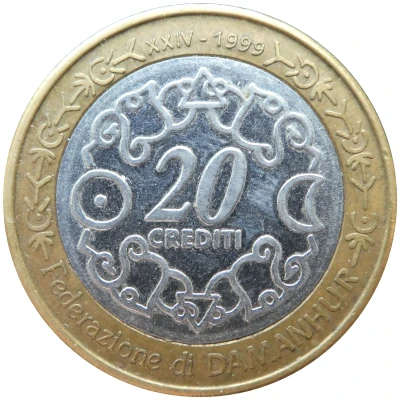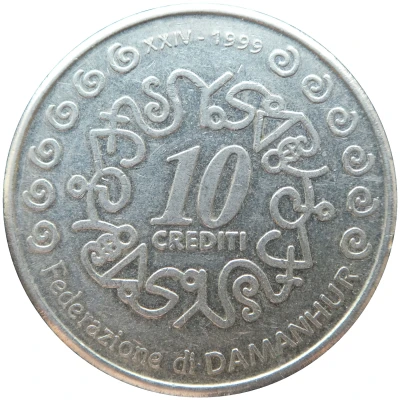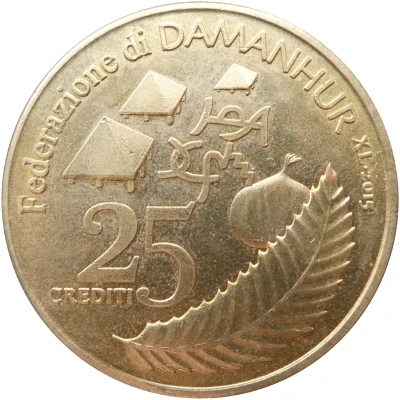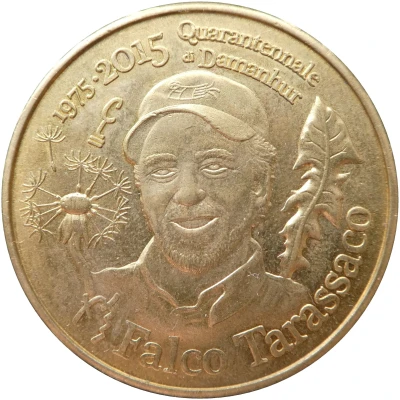


© Edo Timmermans (CC BY-NC-SA)
Token - 20 Crediti
| Bimetallic: bronzital ring (Probably the material of the centre is copper-nickel, see Comments) | 8.7 g | 27.1 mm |
| Location | Federation of Damanhur |
|---|---|
| Type | Trade tokens › Work encampment, mine and wage tokens |
| Years | 1999-2003 |
| Value | 20 Crediti |
| Composition | Bimetallic: bronzital ring (Probably the material of the centre is copper-nickel, see Comments) |
| Weight | 8.7 g |
| Diameter | 27.1 mm |
| Thickness | 2.1 mm |
| Shape | Round |
| Technique | Milled |
| Orientation | Medal alignment ↑↑ |
| Updated | 2024-11-13 |
| Numista | N#374921 |
|---|---|
| Rarity index | 100% |
Reverse
Three nude people making gestures with some spiritual meaning, above them some ancient looking symbols and below them a lemniscate (infinity sign). This is surrounded with text, as well as a medley of symbols similar to those near the edge on the obverse.
Script: Latin
Lettering:
TE TUJL
DAMANHUR
Translation: No website on Damanhur reveils what 'te tujl' means.
Edge
Plain
Comment
People living in and doing paid work for the Damanhur community get paid in Crediti. The value of 1 Credito equals 1 Euro. The coins are used within the community as money, one can pay with either Euros or Crediti in all the shops and restaurants.Even within the community it is not easy to find this coin, the cash registers of the Damanhur supermarket and restaurants tend to mostly contain coins worth less.
Probably the material is nickel-silver (which is non-magnetic). The webpage www.taedivm.org/damanhur1.html lists both the 10 crediti and the 20 crediti cores as made of nickel-silver. This source may not be reliable though, as the 10 crediti coins are non-magnetic, while the 20 crediti cores are magnetic (personal observation).



